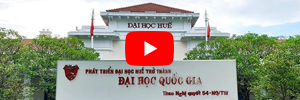|
Đào tạo
|
Phụ phẩm từ sắn là nguồn thức ăn tiềm năng trong chăn nuôi bò ở Cộng hoà dân chủ nhân dân Lào
Góp ý
Bã sắn ở các hố chứa từ nhà máy tinh bột sắn có tiềm năng cao làm thức ăn cho bò tại Cộng hoà Dân chủ nhân dân Lào và có thể sử dụng như là khẩu phần cơ sở cho bò. Năng suất sinh trưởng của bò vàng địa phương tốt khi bò được cho ăn khẩu phần cơ sở là bã sắn, nguồn protein được cung cấp từ bã bia hoặc từ bã bia kết hợp với ngọn lá sắn đắng (50:50). Sử dụng bã sắn kết hợp với lá sắn đắng cho thấy giảm phát thải khí metan hơn so với kết hợp với lá sắn ngọt, đồng thời khi bã sắn kết hợp với bã bia (4%) cũng đã cho thấy tiềm năng giảm sản sinh khí metan trong điều kiện in vitro. Bã sẵn có tiềm năng cho bò vỗ béo cả ở quy mô trang trại và nông hộ ở Cộng hoà Dân chủ Nhân dân Lào khi cho ăn riêng lẻ trong khẩu phần, hoặc sử dụng dưới dạng hỗn hợp hoàn chỉnh lên men.
Tên luận án: Phụ phẩm từ sắn là nguồn thức ăn tiềm năng trong chăn nuôi bò ở Cộng hoà dân chủ nhân dân Lào Ngành: Chăn nuôi Mã số: 9620105 Họ và tên nghiên cứu sinh: Phanthavong Vongsamphanh Giảng viên hướng dẫn: - PGS.TS. Nguyễn Xuân Bả; - TS. Đinh Văn Dũng Đơn vị đào tạo: Trường Đại học Nông Lâm, Đại học Huế
------------------------------------------------------ THE NEW CONTRIBUTION OF THE DISSERTATION
Dissertation title: Cassava by-product as potential feed source for yellow cattle in Lao PDR Major: Animal Sciences Code: 9620105 Author name: Mr. Phanthavong Vongsamphanh Supervisors: - Associate Professor Dr. Nguyen Xuan Ba - Dr. Dinh Van Dung Institutions: University of Agriculture and Forestry, Hue University
Contribution of the dissertation: The research study was aim to improve utilisation of cassava byproducts in development of sustainable cattle feeding regimes in Lao PDR and other countries with similar conditions. There were four experiments presented on the dissertation. Experiments I, was evaluatr by test for finding the potential of feeding value of the storage cassava pulp in an open pit. Experiment II was study of intake, growrate in local yellow cattle by measure the response of cattle performance on bitter cassava foliage or/and brewers’ grains as a source of bypass protein and fiber supplements to cassava pulp-urea basal diet. Experiment III was to study gas and methane production in an in vitro rumen fermentation by evaluate the effect of different varieties of cassava leaves and supplementation with brewers' grains (0 or 4%) on methane production in an in vitro production of cassava pulp-urea as the main substrate and finally, experiment IV was to study the growth rate and to find out the most efficient/economic methodology for incorporating bitter cassava foliage as the protein-fiber source in the cassava pulp for a cattle fattening system. This is the first series of studies and the first scientific information in Lao PDR on utilizing locally available feed resources to manipulate rumen fermentation and thus to improve cattle performance. Cassava pulp in open pit from cassava starch factory can be high potential feed interm of nutrition value and production for fattening cattle in Lao condition and could be used as basal diet. The bypass protein and fiber source can be provide in the form of either: i) brewers’ grain or ii) bitter cassava foliage combine with brewers’ grain (50:50) give good performance supported the same growth of cattle. In vitro rumen incubation of substrate of cassava pulp showed that methane production was decreased by supplementation with cassav leaves or bitter than sweet varieties; and by the addition of lower level of brewers’ grain of 4%. Cassava pulp through various methologies such as separate, fermented and ensilage feed was shown to have poteintal for developing intensive fattening of cattle in feedlot and also in smallholders in Lao PDR.
Các tin mới hơn
|
Tin tức, sự kiện nổi bật
 Bản tin Đại học Huế : Kỷ niệm 43 năm Ngày Nhà giáo Việt Nam (20/11/1982-20/11/2025)
(20-11-2025 17:06)
Bản tin Đại học Huế : Kỷ niệm 43 năm Ngày Nhà giáo Việt Nam (20/11/1982-20/11/2025)
(20-11-2025 17:06)
 Đại Học Huế tiếp tục có mặt trong Bảng xếp hạng đại học Thế Giới Times Higher Education 2026 (THE - WUR 2026)
(09-10-2025 15:44)
Đại Học Huế tiếp tục có mặt trong Bảng xếp hạng đại học Thế Giới Times Higher Education 2026 (THE - WUR 2026)
(09-10-2025 15:44)
Tin tức, sự kiện mới nhất
 Lễ kỷ niệm 76 năm Ngày truyền thống Học sinh - Sinh viên và Hội Sinh viên Việt Nam
(10-01-2026 11:02)
Lễ kỷ niệm 76 năm Ngày truyền thống Học sinh - Sinh viên và Hội Sinh viên Việt Nam
(10-01-2026 11:02)
 Khoa Giáo dục Thể chất – Đại học Huế trao bằng tốt nghiệp cao học khóa 1 và đại học đợt 1 năm 2025
(09-01-2026 16:50)
Khoa Giáo dục Thể chất – Đại học Huế trao bằng tốt nghiệp cao học khóa 1 và đại học đợt 1 năm 2025
(09-01-2026 16:50)
Liên kết
|



